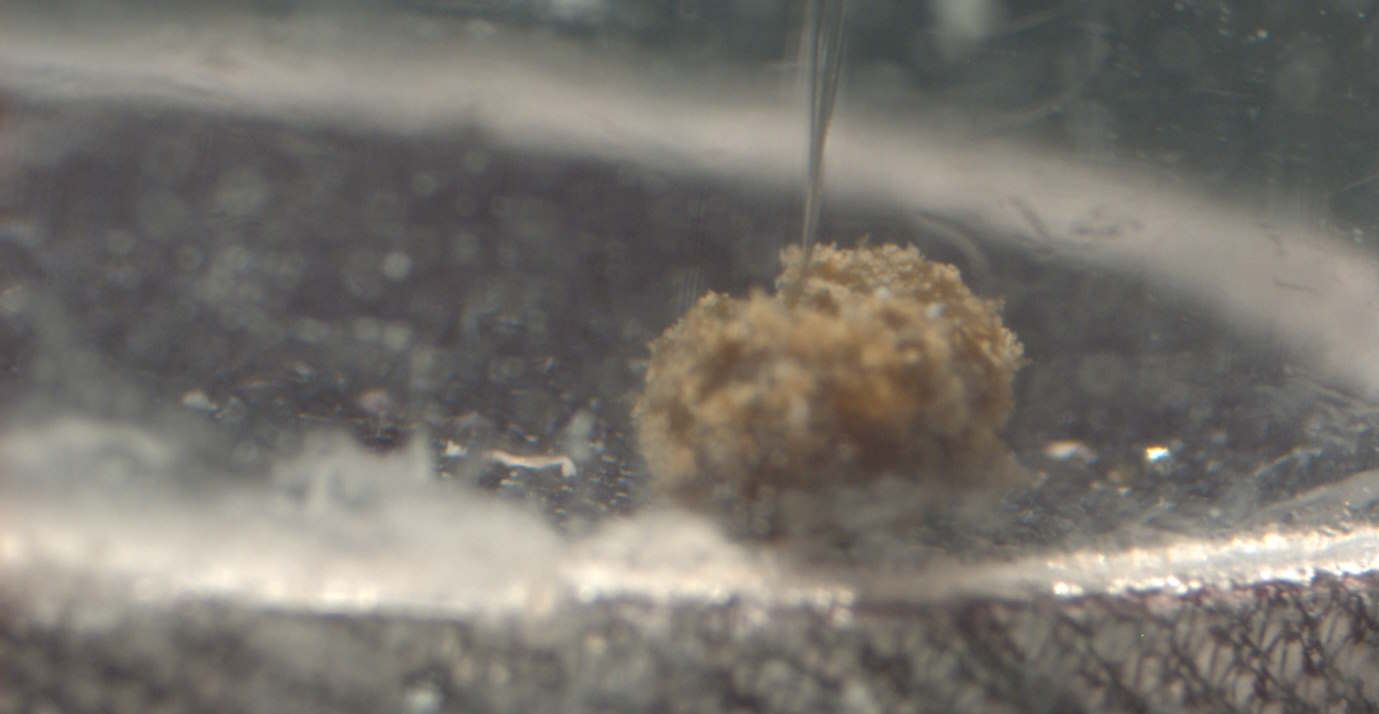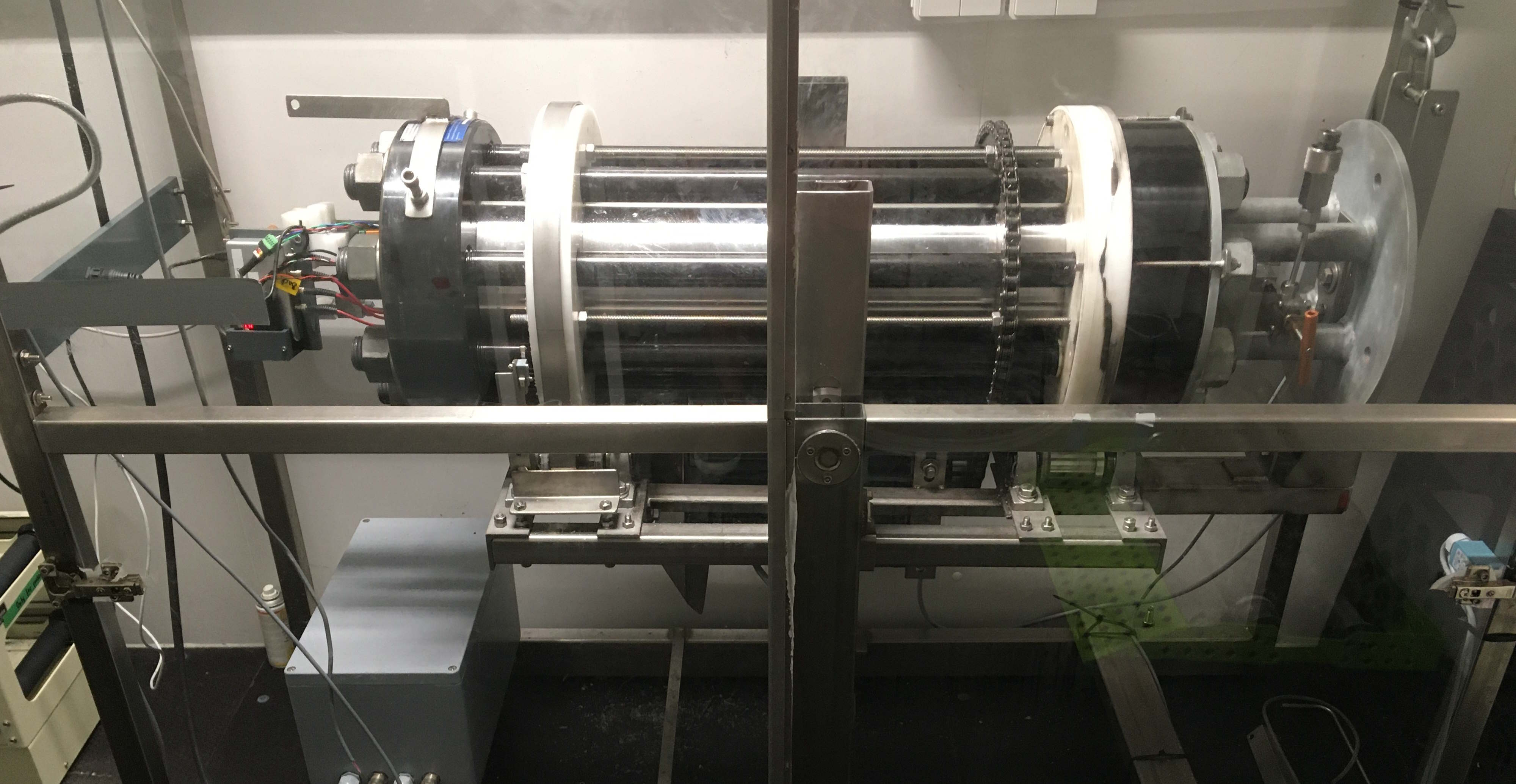
Deep-sea pressure preserves food for microbes in the abyss
Dead algae and other organic material at the surface of the sea disintegrates when they begin to sink to the bottom. But at some point, the water pressure becomes so high that disintegration stops and nutrients are preserved, providing food for the bottom's multitude of microbes and small animals.
A new study from the Danish Center for Hadal Research reports on a series of experiments with exposing marine snow to increasing pressure - up to 1000 bar, which corresponds to the pressure at the bottom of some of the world's deep-sea trenches, 10 km below the sea surface.
Marine snow is millimeter-sized flakes, created when sticky, dead cells at the sea surface clump together with other dead or dying cells, particles and bacteria and sink to the bottom. The organic material can be dead algae, dead small animals, or their feces. Together, it is called marine snow because the flakes look like snow as they sink through the water column. There can be hundreds of different bacteria in one flake in addition to particles of organic matter.
"Not much is known about how marine snow responds to the increasing pressure when it sinks. But it is known that marine snow is food for an enormous amount of microbes and small animals on the seabed. In fact, there are more microbes in the part of the ocean that lies at or below 1000 meters depth than anywhere else on Earth. This habitat is extremely large, and there can be a long distance between the microbes down there, but nevertheless a huge number of Earth's organisms thrive under high pressure, and we don't know how", says biologist Peter Stief, who is the lead author of the study.

Other authors are Ronnie N. Glud, Clemens Schauberger, Kevin W. Becker, Marcus Elvert, John Paul Balmonte, Belén Franco-Cisterna and Mathias Middelboe. The study is published in the journal Communications Earth & Environment.
In addition to the marine snow bringing nutrients such as organic carbon, nitrogen, sulphur and phosphate down to the microbes in the deep, it also contributes to the burial of huge amounts of carbon in the seabed. This happens when an alga during its lifetime absorbs CO2 from the atmosphere, dies and sinks to the bottom, taking the carbon with it. Most marine snow is eaten by animals or broken down by microbes, but a small part is stored on the sea floor.
"Perhaps only 1% of the marine snow gets stored on the seabed. But over time, it accumulates to huge amounts. The oil and gas we are currently extracting is largely created in this way", says Peter Stief.
What happened to the aubergine, the egg and the tomato in the pressure tank?
-
Organisms react differently to pressure. If there are pockets of air in the organism, the air gets compressed, and this causes, for example, a person's lungs to collapse. An egg also holds an airpocket, so when the researchers put it under 1000 bar pressure, corresponding to the pressure at 10 km depth, it collapsed. An aubergine also contains air, but it is distributed in the spongy flesh. When the aubergine came out of the 1000 bar pressure chamber, it looked as if nothing had happened to it, but this was only at first glance: It soon revealed itself to have doubled in weight, as the air had been replaced by water. A tomato was also tested at 1000 bar, and the opposite of what one would initially think happened: It was not squashed, but was intact after 1000 bar, because there is no air in a tomato, only liquid.
Organic matter also reaches the deep-sea microbes in other ways. Data from a number of deep-sea expeditions carried out by the Danish Center for Hadal Research have shown that large sediment slides can occur on slopes in the deep sea. Such sediment slides can instantly send large amounts of nutrient-rich sediment down into the deepest trenches.
Now, Peter Stief and colleagues show that another mechanism also ensures that organic matter can reach the deep.
In the basement under University of Southern Denmark, the hadal researchers have pressure tanks for experiments. The tanks can withstand 1000 bar pressure, which corresponds to the pressure at a depth of 10 km.

The team filled five pressure tanks with seawater and flakes of marine snow that they had made from diatoms and bacteria. Each flake was approx. 2 mm in diameter. By letting the pressure tanks rotate horizontally all the time, the researchers were able to ensure that the flakes remained sinking in water without reaching the bottom of the tank, thus simulating the constant sinking of the flakes. Every day they increased the pressure in the tanks by 50 bar to simulate the pressure at ever-increasing depths.
After four days, the flakes were under 200 bar pressure, corresponding to an ocean depth of 2 km. Then the researchers opened the first tank to see how they flakes did. The same after 400 bar pressure, 600 bar pressure, 800 bar pressure and the last one after 1000 bar pressure.
"We could see that the bacteria's respiration decreased as pressure increased; this means that they "ate" less organic carbon. At 600 bar, respiration stopped completely, and remained so all the way down to 1000 bar pressure, where approx. half of a flake remained - and thus food for the pressure-adapted seabed microbes", says Peter Stief.
Tool for storing of CO2?
-
If organic carbon is stored in the seabed when marine snow sinks, can we then stimulate the formation of marine snow that will extract CO2 from the atmosphere and bury it in the deep sea? In principle yes, and several large-scale experiments have also been tried, for example by pouring iron-rich dust and thus nutrition for microalgae into the sea. "But it's impossible to predict what else will happen to the marine ecosystem and all the organisms living in it when you manipulate nature in that way, so most people have abandoned these ideas," says Peter Stief.
Meet the researcher
Peter Stief is a biologist and associate professor at the Department of Biology and Danish Center for Hadal Research.
Deep-sea research at SDU
Danish Center for Hadal Research is a basic research center for deep sea research. It aims to unravel the diversity of life and the dynamics of element cycling at the greatest ocean depths, adding these unique environments to our understanding of the global ocean.